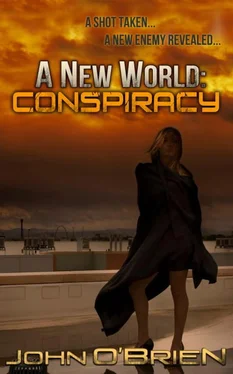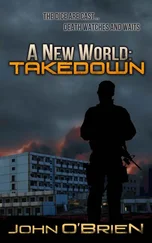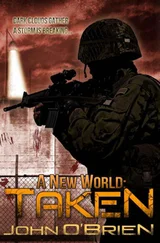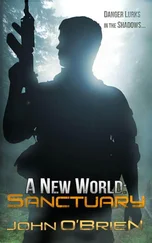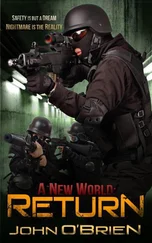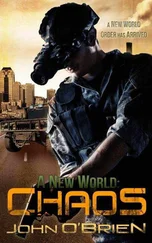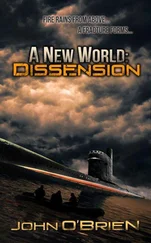Pulling onto the ramp, I hate the paranoia that has crept in. I move faster from the vehicle to the aircraft and check the panels closer during the walk-around which itself is conducted at a quickened pace. I search the surrounding building rooftops for flashes of light or silhouettes. We manage to get the beast into the air without any fatalities or the aircraft blowing up; although I must admit, being exposed on the ramp like that wasn’t my favorite place to be.
We are a crew member short with Lynn taking care of things at Cabela’s with Bannerman. It’s daylight, so we don’t really need the low light monitor. We stream north, looking for signs of the night runners Frank mentioned. There are a few fresh trails through some of the tall grass, but I don’t see anything that would indicate a vast number of them. Opening up, I discern a few packs in the area and have Robert mark the buildings. We have a lot of miles to travel but taking out night runner lairs have a priority just as high.
Circling the first marked building, Robert places a single round into it. The eruption of fire and smoke scatters debris far into an adjacent parking lot. There’s a breeze blowing, and the smoke clears quickly showing that the building has fallen in on itself — a jumble of concrete, plaster, and rebar. Small plumes of smoke drift upward from the rubble and are whisked away in the wind. Scanning the building, the sense of the night runners that used it as shelter is gone.
We hit several other buildings in the same fashion, but soon find our time whittling away. There always seems to be another small group in another structure. Frank was right, there has been an influx of night runners around the bases. We have a choice to continue demolishing buildings or continue our scouting. We have verified Frank’s sightings, but I won’t be able to sleep comfortably tonight until I also verify that we are clear from any imminent attack. With that thought, I radio base to let them know of our findings and proceed to search for any signs of vehicles or encampments.
The rest of the flight is much the same — finding scattered groups of night runners in urban areas — although I note the farther north we travel, the denser the packs become. As we travel east and south, they dissipate dramatically. All of the monitors are running and we should be able to pick out heat signatures, but there’s no sign of a buildup or human group. It takes a few hours, but we cover north, east, and south out to a range of three hundred miles. I would like to go out farther as a fast-moving military convoy can travel almost four hundred miles in a night. However, we just don’t have the time to cover that much area and be back before dark.
Upon returning, I notice a convoy of Strykers , Humvees, loaded flatbed trucks, and tanker trucks heading south down Interstate 5. Contacting base, I find that the runway hasn’t been finished; we’ll have to set down at McChord. Hopefully we’ll be able to move the aircraft in the morning.
The compound is a bustle of activity — our plans being put into motion. The consolidation of our resources takes some of the work crews, but others continue working on our housing. At the southern end of the compound, machinery and crews are carving out a runway and associated ramp space. All-in-all, it’s a good sight to behold. Many things are coming together, but I feel the looming pressure of time. With the late afternoon closing in, I step into the darker interior of Cabela’s.
Harold is at one of the tables staring intently at the screen of a laptop, its blue light reflecting off his face. He shakes his head and his fingers move rapidly across the keyboard before he returns to stare at it intently once again. Looking up quickly as I make my way across the first floor, he waves me frantically to him.
“Any luck?” I ask, coming to stand at his shoulder.
Swiveling in his chair to face me, he answers, “I don’t even know where to begin.”
“How about in the middle?” I respond.
“What?”
“I’m kidding. I’ve always found the beginning to be the best place. Let’s try that,” I state, glancing at an open document on the screen.
Harold sighs heavily and takes a moment to gather his thoughts. “You were right to take this hard drive, although not for the reasons you initially thought. There were more than a few hidden, locked files. The algorithm wasn’t that hard to figure out, but it’s as I suspected, the director was definitely in on this,” Harold says.
“In on what?” I ask, trying to make sense of the files spread across the laptop screen.
With another sigh, Harold spins back to face the laptop. “There are files here denoting locations, test results, goals, maps of facilities, lists of names, transmission modes, a—”
“Whoa. Slow down, Harold,” I interrupt.
“…few corrupted files, satellite control, nanotechnology,” Harold continues as if I had merely blown hot air into the room.
I reach down and grab his shoulder, making him turn to meet my eyes.
“Harold, slow…the fuck…down. What are you talking about?” I ask, having gained his undivided attention.
“I told you I didn’t know where to start,” he murmurs, turning to the screen once again.
With another deep sigh, he rubs his face. “Okay, remember our conversation about the rogue network and me getting in there momentarily?”
“Only too well,” I reply.
“Keep that conversation in mind as I go through this,” he says, closing the documents on the screen, but leaving one in place.
“This,” Harold says, pointing to the screen, “is a report from test results conducted with nanotechnology. I haven’t read through the entire thing but, from what I have read, it shows results of various transmission modes to administer nanobots.”
“Nanobots? And you mean transmission to people?” I ask with a sick feeling settling in my stomach.
“Yes. And the ones mentioned here are particularly nasty ones. They adhere to the cerebral cortex,” Harold answers.
“And?”
“They contain small explosives.” Harold pauses to let the emphasis of what he is saying settle in.
“This was tested?” I ask, the sick feeling settling deeper.
“Yes. With varied results. The transmission was tested with food, liquids, aerosols, and a few others…including vaccines ,” Harold answers, emphasizing the last.
“Fuck me,” is all I can reply with. “This still sounds like contingency planning and think-tank stuff. They test nasty shit all of the time. It doesn’t mean it’s enacted.”
With a small shake of his head, Harold pulls up another file. “This says differently.”
“What am I looking at now?”
“This,” Harold says, pointing at the screen again, “is a plan initiating the whole mess. It lists a phased approach…building locations, facility maps, along with the goal of emerging and taking control of resources… the whole thing.”
“Still, it’s just a plan in a document. There must be a thousand such plans nestled in computers everywhere. There is a contingency plan for almost everything. Again, that doesn’t mean they are put into place and acted on,” I state.
“True, except for several emails I culled out.” Harold opens yet another document. “These messages detail information about putting the nanobots into the Capetown flu vaccine. If I read these correctly, they put these in two-thirds of the vaccines distributed.”
The room feels both colder and warmer at the same time. All else fades from my consciousness except Harold and the screen with the open documents. As if this world wasn’t fucked up enough, it suddenly becomes more so as I read through several emails that Harold consolidated.
Читать дальше
